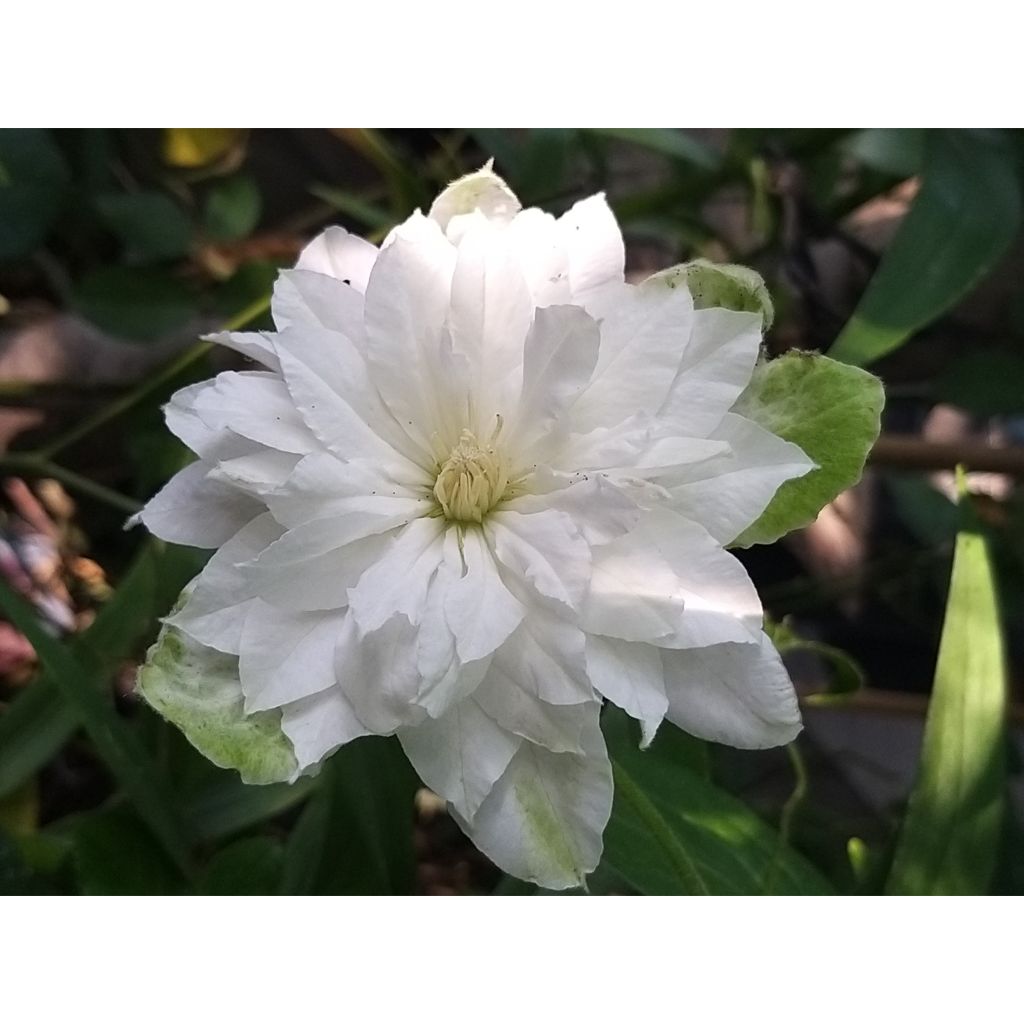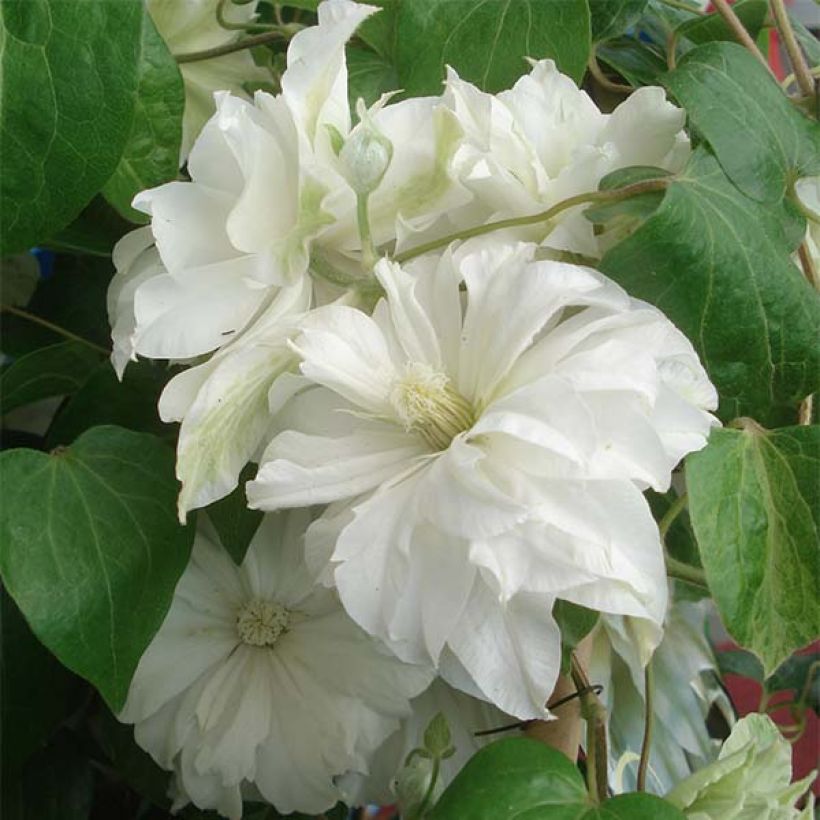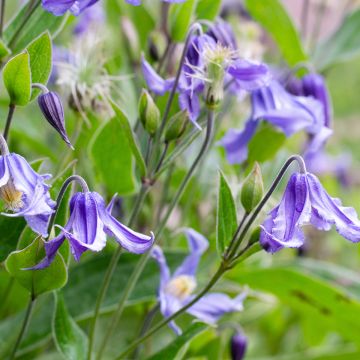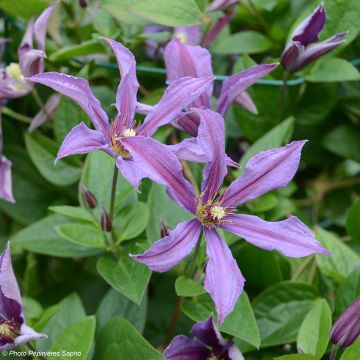

Clematite Maria Skłodowska Curie - Clematis


Clematite Maria Skłodowska Curie - Clematis


Clematite Maria Skłodowska Curie - Clematis


Clematis Maria Skłodowska Curie
Clematis Maria Skłodowska Curie
Clematis Maria Skłodowska Curie
Old Man's Beard, Traveller's Joy, Virgin's Bower
Thank you for this young plant as a replacement for the beautiful one that was destroyed by the carrier. Given its size, I think I'll see its color next year.
Mikita, 15/05/2025
Special offer!
Receive a €20 voucher for any order over €90 (excluding delivery costs, credit notes, and plastic-free options)!
1- Add your favorite plants to your cart.
2- Once you have reached €90, confirm your order (you can even choose the delivery date!).
3- As soon as your order is shipped, you will receive an email containing your voucher code, valid for 3 months (90 days).
Your voucher is unique and can only be used once, for any order with a minimum value of €20, excluding delivery costs.
Can be combined with other current offers, non-divisible and non-refundable.
Why not try an alternative variety in stock?
View all →This plant carries a 6 months recovery warranty
More information
We guarantee the quality of our plants for a full growing cycle, and will replace at our expense any plant that fails to recover under normal climatic and planting conditions.
Would this plant suit my garden?
Set up your Plantfit profile →
Description
Clematis 'Maria Sklodowska Curie' is a recent Polish creation that evokes a rustle of particularly bright Chantilly lace when in bloom. It produces beautiful, very large double to semi-double flowers from June to July, and sometimes until September. Their elliptical sepals are fringed and wavy, a creamy white colour that turns slightly greenish at the base and edges, surrounding a heart of golden anthers. This flowering covers a good part of the vegetation. Floriferous and charming, this variety prefers gentle sunlight and there are none better to adorn trellises and fences, as well as terraces when planted in a pretty pot.
Clematis 'Maria Sklodowska Curie' is a Polish creation with uncertain parentage. This exceptional variety belongs, like all clematis, to the buttercup family and is part of the group of hybrids that flower in summer on the current year's growth. It is a semi-woody climbing perennial that will not exceed 2m (7ft) high, with a spread of 1m² and rapid growth. It produces mostly double, white flowers in June-July, reaching 12 to 15cm (5 to 6in) in diameter marked with green at the heart and base as they mature. They cover all the vegetation that is above 80cm (32in) from the ground. The flowers are solitary or grouped in cymes, erect or pendant. Its deciduous foliage is composed of small, opposite, dark green leaves, divided into at least 3 leaflets. This clematis appreciates sunny exposures, but not scorching sunlight. The plant attaches itself to the support or host plant through petioles transformed into tendrils.
Plant clematis in the company of your climbing roses to extend the flowering of your walls and pergolas until the end of summer. It is a diverse genus with flowers of all colours, shapes, and sizes. Take advantage of their easy cultivation to give your garden a romantic and bohemian touch. 'Maria Sklodowska Curie' is easy to grow in the garden, and will look fantastic with morning glories and sweet peas on its branches for a season. Despite its modest size, it will be admired planted in a beautiful container, reigning over a balcony or next to an entrance door, welcoming visitors with its stunning flowering.
Report an error about the product description
Clematis Maria Skłodowska Curie in pictures




Plant habit
Flowering
Foliage
Botanical data
Clematis
Maria Skłodowska Curie
Ranunculaceae
Old Man's Beard, Traveller's Joy, Virgin's Bower
Cultivar or hybrid
Other Clematis Viticella
View all →Planting and care
Plant Clematis 'Maria Skodowska Curie' in the sun, in fertile, humus-rich, well-drained soil, shading the roots and base of the stem (with a flat tile, for example). Herbaceous species prefer full sun and can wilt in excessively moist soil.
Plant your clematis by covering the root ball with 3 cm (1in) of soil, in soil worked to a depth of 20 cm (8in), lightened with good compost. Water regularly during the first few weeks, but be careful of stagnant water, as it can cause collar rot. Cover the base of clematis with a small mound of soil, reducing the risk of clematis wilt while promoting vigorous new shoots from the crown. After planting, prune the stems of deciduous climbing clematis to about 30 cm (12in) from the base above a healthy pair of buds. Mulch in February with garden compost or well-decomposed manure, avoiding direct contact with the stems. Train the stems, without crushing them, until the plant can grip onto supports by itself. Clematis also enjoy growing freely on neighbouring plants.
This variety blooms on new growth in summer, so prune it in March, leaving 35 cm (14in) of stem (slightly shorter on older subjects), cutting cleanly above two large buds. Voles and caterpillars can attack clematis and devour the stems. Aphids and whiteflies from greenhouses are also potential pests.
Planting period
Intended location
Care
-
, onOrder confirmed
Reply from on Promesse de fleurs
Similar products
Haven't found what you were looking for?
Hardiness is the lowest winter temperature a plant can endure without suffering serious damage or even dying. However, hardiness is affected by location (a sheltered area, such as a patio), protection (winter cover) and soil type (hardiness is improved by well-drained soil).

Photo Sharing Terms & Conditions
In order to encourage gardeners to interact and share their experiences, Promesse de fleurs offers various media enabling content to be uploaded onto its Site - in particular via the ‘Photo sharing’ module.
The User agrees to refrain from:
- Posting any content that is illegal, prejudicial, insulting, racist, inciteful to hatred, revisionist, contrary to public decency, that infringes on privacy or on the privacy rights of third parties, in particular the publicity rights of persons and goods, intellectual property rights, or the right to privacy.
- Submitting content on behalf of a third party;
- Impersonate the identity of a third party and/or publish any personal information about a third party;
In general, the User undertakes to refrain from any unethical behaviour.
All Content (in particular text, comments, files, images, photos, videos, creative works, etc.), which may be subject to property or intellectual property rights, image or other private rights, shall remain the property of the User, subject to the limited rights granted by the terms of the licence granted by Promesse de fleurs as stated below. Users are at liberty to publish or not to publish such Content on the Site, notably via the ‘Photo Sharing’ facility, and accept that this Content shall be made public and freely accessible, notably on the Internet.
Users further acknowledge, undertake to have ,and guarantee that they hold all necessary rights and permissions to publish such material on the Site, in particular with regard to the legislation in force pertaining to any privacy, property, intellectual property, image, or contractual rights, or rights of any other nature. By publishing such Content on the Site, Users acknowledge accepting full liability as publishers of the Content within the meaning of the law, and grant Promesse de fleurs, free of charge, an inclusive, worldwide licence for the said Content for the entire duration of its publication, including all reproduction, representation, up/downloading, displaying, performing, transmission, and storage rights.
Users also grant permission for their name to be linked to the Content and accept that this link may not always be made available.
By engaging in posting material, Users consent to their Content becoming automatically accessible on the Internet, in particular on other sites and/or blogs and/or web pages of the Promesse de fleurs site, including in particular social pages and the Promesse de fleurs catalogue.
Users may secure the removal of entrusted content free of charge by issuing a simple request via our contact form.
The flowering period indicated on our website applies to countries and regions located in USDA zone 8 (France, the United Kingdom, Ireland, the Netherlands, etc.)
It will vary according to where you live:
- In zones 9 to 10 (Italy, Spain, Greece, etc.), flowering will occur about 2 to 4 weeks earlier.
- In zones 6 to 7 (Germany, Poland, Slovenia, and lower mountainous regions), flowering will be delayed by 2 to 3 weeks.
- In zone 5 (Central Europe, Scandinavia), blooming will be delayed by 3 to 5 weeks.
In temperate climates, pruning of spring-flowering shrubs (forsythia, spireas, etc.) should be done just after flowering.
Pruning of summer-flowering shrubs (Indian Lilac, Perovskia, etc.) can be done in winter or spring.
In cold regions as well as with frost-sensitive plants, avoid pruning too early when severe frosts may still occur.
The planting period indicated on our website applies to countries and regions located in USDA zone 8 (France, United Kingdom, Ireland, Netherlands).
It will vary according to where you live:
- In Mediterranean zones (Marseille, Madrid, Milan, etc.), autumn and winter are the best planting periods.
- In continental zones (Strasbourg, Munich, Vienna, etc.), delay planting by 2 to 3 weeks in spring and bring it forward by 2 to 4 weeks in autumn.
- In mountainous regions (the Alps, Pyrenees, Carpathians, etc.), it is best to plant in late spring (May-June) or late summer (August-September).
The harvesting period indicated on our website applies to countries and regions in USDA zone 8 (France, England, Ireland, the Netherlands).
In colder areas (Scandinavia, Poland, Austria...) fruit and vegetable harvests are likely to be delayed by 3-4 weeks.
In warmer areas (Italy, Spain, Greece, etc.), harvesting will probably take place earlier, depending on weather conditions.
The sowing periods indicated on our website apply to countries and regions within USDA Zone 8 (France, UK, Ireland, Netherlands).
In colder areas (Scandinavia, Poland, Austria...), delay any outdoor sowing by 3-4 weeks, or sow under glass.
In warmer climes (Italy, Spain, Greece, etc.), bring outdoor sowing forward by a few weeks.

























































